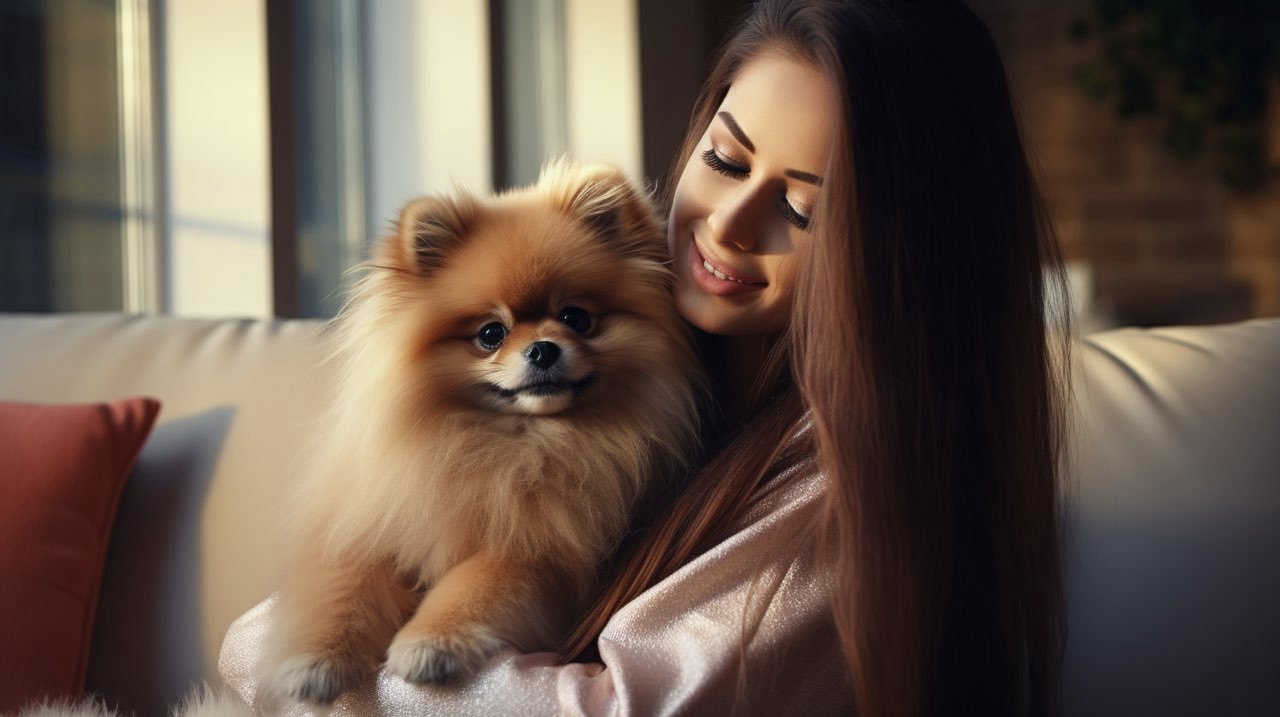
Separation anxiety is a common issue in Pomeranians, known for their close bonds with their owners. This anxiety manifests as distress and behavioral problems when left alone. Addressing separation anxiety effectively requires patience, consistency, and a structured approach to gradually accustom your Pomeranian to being alone. Here’s how you can help ease your Pomeranian’s separation anxiety:
Understanding Separation Anxiety
First, it’s crucial to recognize the signs of separation anxiety:
-
Excessive barking or howling when alone.
-
Destructive behaviors, such as chewing and digging, especially around doors and windows.
-
Pacing in an obsessive pattern.
-
Accidents even though they are house trained.
-
Attempts to escape from the area where they are confined when left alone.
Steps to Alleviate Separation Anxiety in Your Pomeranian
1. Create a Safe Space
Designate a comfortable area in your home where your Pomeranian can feel secure when you’re not there. This could be a crate if they are crate trained, or a specific room with their bed and favorite toys. This space should be associated with positive experiences, so encourage them to spend time there even when you are home.
2. Gradual Desensitization
The key to resolving separation anxiety is to accustom your Pomeranian to your absence gradually:
-
Start by leaving them alone for very short periods (a few minutes).
-
Gradually increase the duration as they begin to feel more comfortable.
-
During this time, avoid making a big fuss when you leave or return home. This helps to normalize the act of leaving and reduces their anxiety.
3. Exercise and Stimulation
Before you leave your Pomeranian alone, make sure they get plenty of exercise and mental stimulation. A tired dog is less likely to feel anxious and more likely to rest while you’re away. Activities like a long walk or playtime can significantly reduce anxiety.
4. Interactive Toys
Leave them with interactive toys that can keep them occupied. Toys like puzzle feeders that dispense treats can be particularly effective as they not only distract your dog but also provide positive reinforcement in your absence.
5. Practice Calm Departures
Avoid emotional departures that might distress your dog. Keep your leave-taking and return very low-key to avoid increasing their anxiety.
6. Consider Professional Help
If your Pomeranian’s separation anxiety is severe, consider seeking help from a professional dog trainer or a behaviorist. They can offer more personalized training strategies and interventions.
7. Use of Calming Products
Consider using dog pheromone diffusers or collars that can help to calm your dog. These products mimic the pheromones that mother dogs produce to calm their puppies.
8. Routine and Predictability
Establish a consistent daily routine. Dogs, much like humans, find comfort in predictability. Feeding, walks, playtime, and quiet time should occur at roughly the same time each day. This predictability can help reduce the anxiety associated with your departure.
9. Leave Background Noise
Leaving a radio or TV on at a low volume can help soothe your Pomeranian by providing familiar sounds and voices, making them feel less alone. Alternatively, there are various apps and playlists designed specifically for dogs that provide calming sounds and music.
10. Clothing with Your Scent
Leaving an item of clothing that smells like you with your Pomeranian can also provide comfort and reduce anxiety. Your scent acts as a reassuring reminder of your presence.
11. Behavioral Conditioning
Work on conditioning your dog to not associate cues of your departure (like picking up keys or putting on shoes) with negative emotions. You can do this by performing these actions multiple times without leaving. This helps desensitize your dog to these triggers.
12. Medication and Natural Remedies
In cases where non-medical interventions are not enough, you might consider discussing medication with your veterinarian. Anti-anxiety medications can sometimes be necessary to help manage your dog’s anxiety more effectively. Additionally, natural supplements like CBD oils or calming chews might also be beneficial, though you should always consult with your vet before introducing any new supplements.
13. Doggy Daycare or Companion Pets
For some dogs, the presence of another dog or a pet-friendly environment like a daycare can provide significant relief from anxiety. This is especially true for Pomeranians, who often enjoy the company of other dogs. However, this should be approached carefully, as not all dogs are suited for social environments.
14. Professional Training Programs
Sometimes, the best approach is a professional training program. These programs can offer structured training that is tailored to your dog’s specific needs, incorporating various techniques that you might not be familiar with.
Conclusion
Treating separation anxiety in Pomeranians, or any dog, is a gradual process that requires empathy, consistency, and patience. It’s about making your dog feel safe and comfortable when they are alone. Remember, every dog is different, and what works for one might not work for another. If the standard approaches don’t seem to help, don’t hesitate to consult a professional for guidance tailored to your specific situation.
For additional resources and support, websites like PetMD provide useful information on handling various aspects of pet anxiety and health. Remember, you’re not alone in this—many pet owners deal with similar challenges, and there’s plenty of help available.
